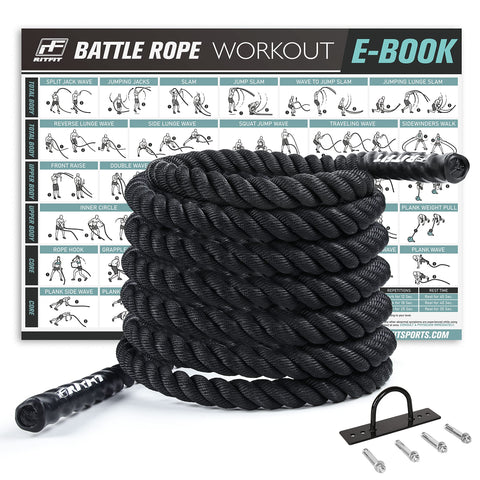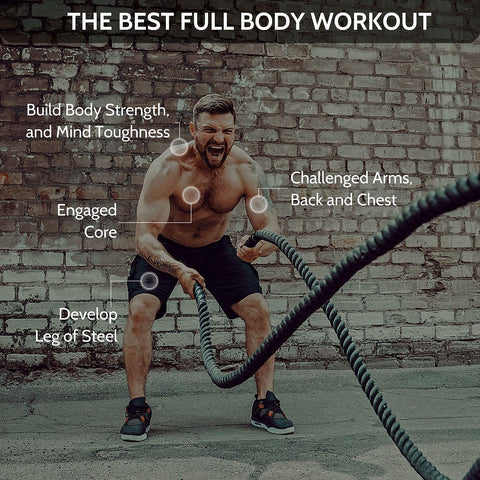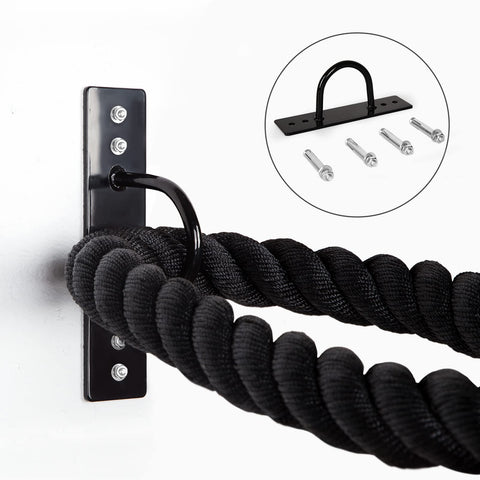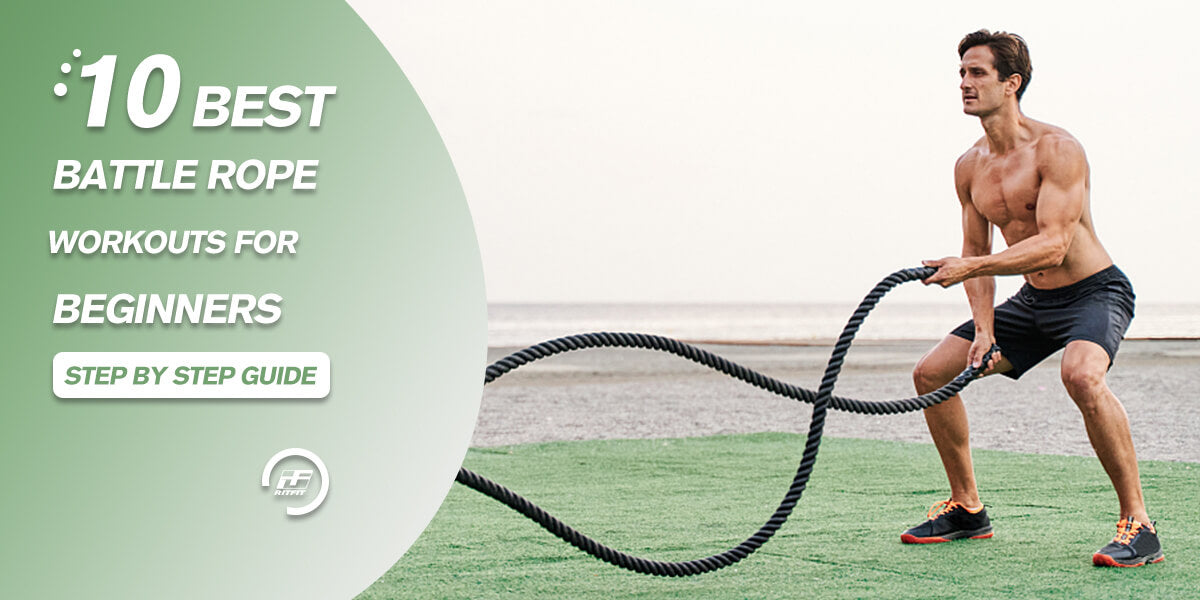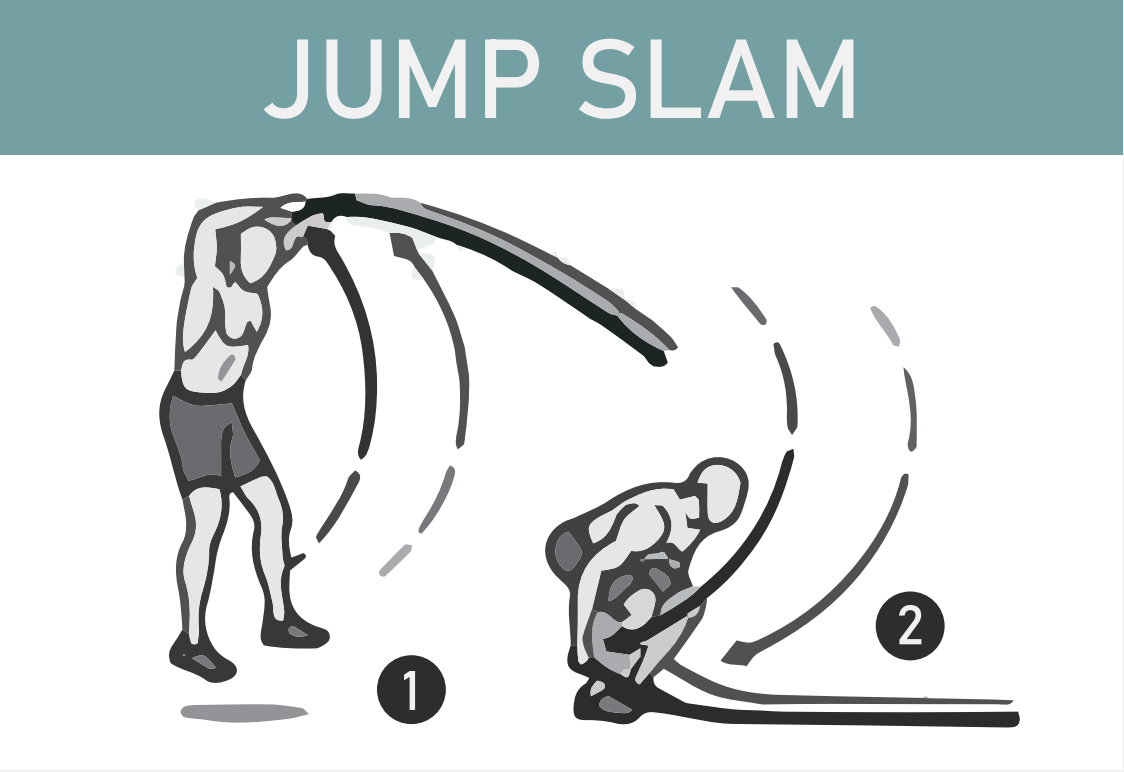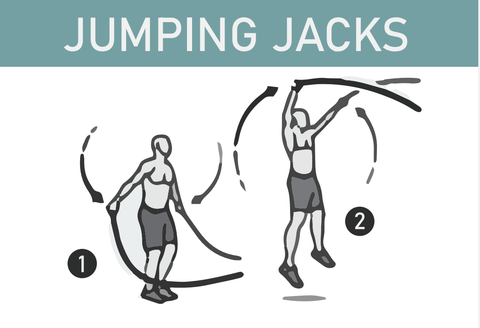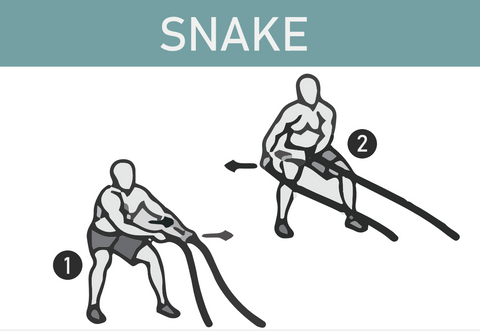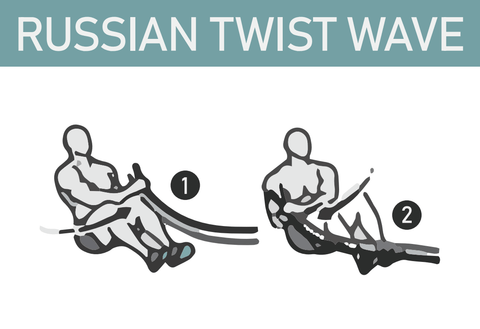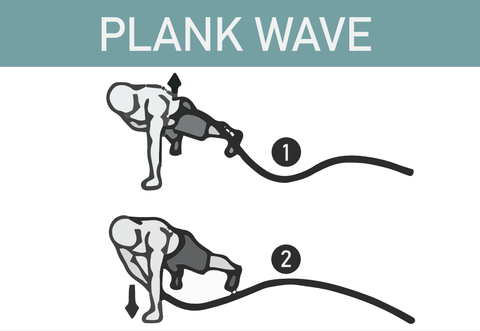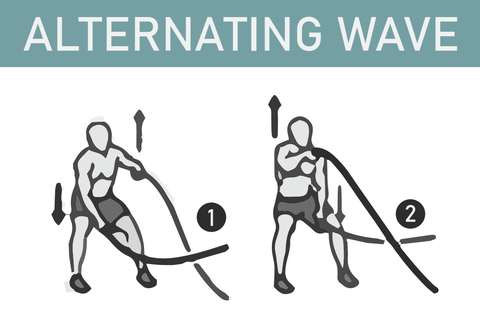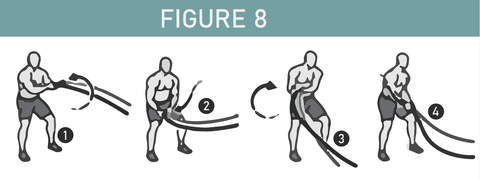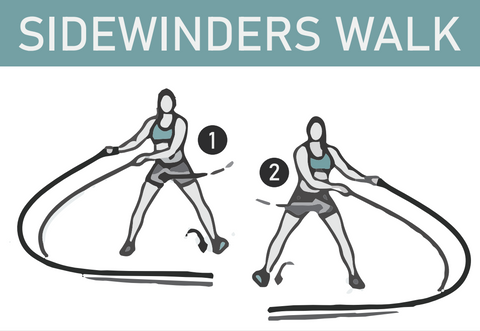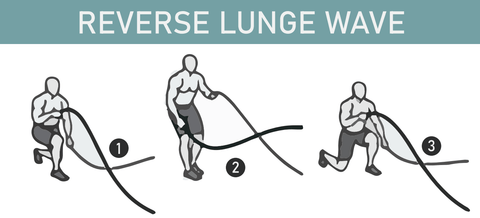10 Best Battle Rope Workouts for Beginners (Step by Step Guide)
Photo from RitFit Sports
Originally Posted On: https://www.ritfitsports.com/blogs/article/10-best-battle-rope-workouts-for-beginners
Battle rope workouts are incredibly effective in building strength, endurance, and cardio. Battle ropes are cheap, easy to set up, and allow you to perform several workouts from the comfort of your home. They help in building strength by incorporating a wide range of different muscle groups. These battle ropes can be used for upper and lower body exercises, depending on which muscles you wish to target.
But if you’re a beginner, it can be confusing as to which battle rope workout you should be doing. In this article, we will discuss:
- What is a battle rope?
- How to use a battle rope?
- How to anchor a battle rope?
- The best 10 battle rope workouts for beginners
- What size battle rope should I get?
- How long should a battle rope workout be?
If you’re looking for effective ways to incorporate a battle rope into your workout, read this guide to learn about the best battle rope workouts and how to do them.
What is A Battle Rope?
A Battle Rope is a type of fitness equipment used for aerobic exercise. It looks like a jump rope, only bigger and made out of thicker, heavier rope. It is designed to be swung, weighted, or attached to a pulley.
(Download for free: RitFit battle rope workout poster)
Battle ropes are weighted ropes that are used to boost the strength and endurance of the body. These ropes are used in different ways to help improve the strength and agility of the body. It is used as a replacement for regular ropes and also used as a great training tool for fighters and athletes.
The idea behind the ropes is that they are a straightforward, effective tool for conditioning the whole body. In addition to burning calories, battle ropes are excellent tools for building muscle and fighting.
How to Use A Battle Rope?
To use a battle rope, one must stand with their knees slightly bent and feet hip-width apart with a battle rope in each hand.
You start with one going behind your feet, then swinging the battle rope like you are in a boxing match. You want to swing it like you are trying to land a punch on an opponent in front of you.
One should not swing the ropes like they are trying to row a boat or make a bullwhip noise as this can strain the arm, shoulder, and back.
When using a battle rope, proper posture is the key. You generally want to stand with your knees slightly bent in a quarter-squat. As a result, you can avoid overarching or rounding your back by stacking your spine over your pelvis. In addition to keeping your chest up and your hips back, you should maintain a neutral spine.
As your arms are moving and your core absorbs a lot of that movement, having good posture with your spine allows your core to engage better and distribute those forces more effectively.
How to Anchor A Battle Rope?
It’s crucial that you anchor the battle rope securely so that it won’t bounce all over the place when you’re working out with it.
Anchoring Battle Ropes Indoor
To ensure a safe and successful indoor battle rope workout, you’ll need to install an anchor on your battle rope. You can do this by following these steps:
- The first step is to determine the anchor’s height.
- Approximately 3 feet from the ground will be the best place to place the anchor.
- Afterward, attach the anchor to the wall with bolts or drills.
- Finish by fitting the battle ropes.
- Ideally, battle ropes should be 8-10 feet long.
Anchoring Battle Ropes Outdoor
There are a few different ways that you can go about installing your battle ropes outside. The first way is to bolt the anchor onto a wall outside- similar to how you would install it indoors. You can also buy anchor straps that allow you to secure your ropes around heavier objects, like a gate.
In the outdoor setting, battle ropes are most commonly installed by anchoring them to the ground. You can mount this anchor in dirt or concrete, although it’s easier to mount it in the dirt.
- Choose an appropriate ground anchor. Place it up to a foot below ground level, and needs to be at least 4 feet long.
- Securing the ground anchor is essential.
- Test the anchor’s strength by attaching the ropes.
- You may need to adjust the ground anchor if you see the battle ropes too high or too low.
The Best 10 Battle Rope Workouts for Beginners
Battle ropes are a great way to get in a full-body workout. They can help you develop endurance, strength, and speed. Battle ropes are also great for getting an intense workout in a short amount of time.
Battle ropes can be used for a variety of workouts. If you’re just starting out with battle rope training, you may consider these 10 best battle rope workouts for beginners. These battle rope workouts are easy to follow and will help you get started with your personal fitness goals.
Battle Rope Workout #1 – Jumping Slam
Battle rope jumping slams are a great way to build strength in your legs and burn out your core. They’re great for building strength and endurance in your legs, but they also work your core and back muscles.
Muscles worked
- Abs
- Shoulders
- upper back
- Core
How to do it?
- To start, stand in front of your battle rope with your feet shoulder-width apart, facing the rope.
- Hold the battle rope in both hands and get into a squatting position.
- Raising your hands overhead, jump high into the air.
- It’s important to keep your core tight so that you don’t land on your tailbone or injure your back.
- Once you have landed in a squat, smash the ropes forcefully onto the floor in a wave motion
Battle Rope Workout #2 – Jumping Jacks
Battle rope jumping jacks is a great way to get your heart rate up. These simple movements will help you burn calories and improve your endurance. This is a great workout for beginners, especially if you’re just starting out with battle ropes.
Muscles worked
- Calves
- Shoulders
- Quadriceps
How to do it?
- Start in a standing position with feet together and hands at your sides.
- With your palms facing each other, hold the battle ropes with a side grip.
- Lift your arms to shoulder height as you jump a little wider than shoulder-width apart. Make sure your elbows are slightly bent while keeping your arms straight. Utilize the momentum of the continuous jumps to lift the ropes high!
- As you jump inwards, bring your feet together again and slam the ropes down to your sides.
- Repeat this motion for 30 seconds or more, depending on how much time you have available or how motivated you feel!
Battle Rope Workout #3 – Battle Rope Snakes
Battle rope snakes is a great gym workout exercise that targets your abs, shoulders, upper back and lower traps. It also involves biceps and forearms and quadriceps.
Muscles worked
- Quadriceps
- Shoulders
- Forearms
- Biceps
How to do it?
- Hold the battle rope in each hand. Slightly bend the knees and maintain a tight core.
- While maintaining your hands at core level, start the movement by bringing the ropes out to the respective sides. The right side of the rope will go to the right side while the left rope will go to the left side.
- In the next step, bring the ropes towards one another and immediately back out.
- The movement will be similar to a slithering snake.
- Continue performing this movement multiple times.
Battle Rope Workout #4 – Russian Twist Wave
Battle rope russian twist wave is the best rope workout for your core. It builds strength in your obliques and lower back muscles.
Muscles worked
- Obliques
- Abs
How to do it?
- Put yourself in a seated position on a mat or floor.
- Position yourself in an upright position facing the ropes. The back of your body should be slightly tilted backward while sitting straight. Using this technique will help you engage your core. Avoid touching your ears with your shoulders. Keep them back and down away from ears.
- Maintain a slight bend in your knees while keeping your heels grounded. Place the battle ropes close together at the midline of your body.
- While looking ahead, slam the ropes to both sides of your body while keeping your arms extended, and elbows slightly bent. Control the movement by rotating your torso just a bit.
Battle Rope Workout #5 – Plank Waves
The plank waves battle rope workout is a simple but effective way to strengthen the deep muscles of your core. It activates all your upper body muscles as the rope moves up and down. It’s hard to believe that just one battle rope workout can make such a big difference, but it really does! Try it out – you’ll be amazed at how much stronger you feel in just a few sessions.
Muscles worked
- Core muscles (rectus abdominis & internal and external obliques)
How to do it?
- Start in a high plank position, hands directly under your shoulders and resting on the ground.
- Straighten your back and engage your core.
- Grasp the battle rope with one hand. Take a side grip on it. Pull your belly button into your spine and slightly protract your shoulder blades prior to starting. Maintain a square posture at the hips and shoulders.
- While keeping your arm straight and your elbow slightly bent, start whipping your rope up and down to create a lateral wave. Avoid wiggles in your hips by squeezing your glutes and engaging your core.
- This movement must be constant throughout the exercise.
Battle Rope Workout #6 – Alternating Waves
This battle rope workout is perfect for people who want to get a full-body workout in a short amount of time. It mainly targets your shoulders while also challenging your arms and core. The alternating waves workout helps build muscle!
Muscles worked
- shoulder
- arms
- upper back
How to do it?
- Maintain an elevated hip position while bending your knees.
- Ensure that the back is straight and the chest is elevated.
- As you hold one end of the battle rope in each hand, extend your arms forward while maintaining a slight bend in your elbows.
- As you begin, lift your left hand and lower your right hand.
- Now lower the left hand and then simultaneously raise the right hand. Keep the core tight as you repeat this back-and-forth motion.
Battle Rope Workout #7 – Figure 8
It’s a great way to target obliques without having to do any crunches or sit-ups. Try it out!
Muscles worked
- Core
- Shoulder muscles
How to do it?
- Keeping your core tight, bring both hands across your body on the left side and down.
- Moving arms across your body, move the battle ropes upward and then down to your right side.
- In the same manner, raise the ropes, and slam down to the left.
- Consider drawing an infinity sign using the ropes.
Battle Rope Workout #8 – Sidewinders Walk
Sidewinders walk is the best battle rope workout if you want to build upper body and core strength. This battle rope workout is also known as side-to-side waves and targets your entire body.
Muscles worked
- Abdominals
- Shoulders
- Lower back
- Arms
How to do it?
- To start this battle rope workout, swivel your hips side to side. The idea is to keep your transverse abdominis activated to stabilize the core.
- Swing the rope across the floor from left to right just like you were sweeping the floor
- Make sure your toes are firmly planted onto the ground while allowing your heels to raise and lower slightly
Battle Rope Workout #9 – Reverse lunge Wave
The reverse lunge waves is a high impact battle rope workout that will help you get your heart rate up and burn calories. It is a great way to build strength in the shoulders, arms, and core.
Muscles worked
- Shoulders
- Arms
- Core
- Lower body muscles
How to do it?
- Hold a rope in each hand with the ends held firmly between your palms.
- Perform alternate waves with your battle ropes as you step back into a reverse lunge.
- Return to standing, but keep your arms moving as you step into a reverse lunge on the opposite leg.
- Repeat for reps as needed.
Battle Rope Workout #10 – Rope Slam
The battle rope slams help to build up your upper body strength. It helps to make your shoulders, arms, and chest stronger. Another benefit of this battle rope workout is that you will also be able to improve your endurance as well as your cardiorespiratory fitness.
Muscles worked
- Shoulders
- Biceps
- Triceps
- Lats
How to do it?
- Hold battle ropes with palms facing inward, while standing feet shoulder width apart.
- Swing rope high above your head, then slam down into a high squat while using explosive movements.
- The rope should be above your ears at its high point and below your knees at its low point.
What Size Battle Rope Should I Get?
A battle rope should be chosen based on a variety of factors, such as your body type, size, gender, fitness level, and training experience. However, the most popular size is a 50-foot rope with a 1.5″ diameter. This rope is perfect for most people looking to improve their general conditioning because it is difficult enough to use for a well-conditioned person while still being easy enough for a beginner to learn basic techniques.
If you are looking for a rope for pulling exercises, the 100-foot battle rope is the best choice. It is the perfect length for looping the rope around your body and attaching a weight or pulling a sled. This length will reduce the time you are twirling the rope around and set up for your next rep. If you are more interested in conditioning and HIIT style training, the shorter, thinner, and lighter ropes are a better choice. They are easier to handle and are more fun to twirl around than the longer ropes.
How Long Should A Battle Rope Workout Be?
The most common duration used by fitness experts is 10-15 minutes. It’s important to remember that how long you do the exercise is less important than how hard you push yourself during those 10-15 minutes.
You may not be able to handle a 10-minute workout initially, but that’s ok. You can start with a 5-minute workout and eventually extend it to 10 minutes.
Researchers found in a study that a 10-minute battle rope workout results in increased heart rates and energy expenditure (calorie burn) that met previously established thresholds for improving cardiorespiratory fitness.
Summary
Battle rope workouts elevate heart rate and improve athletic performance. They’re ideal for beginners or people new to the battle rope, but they’re also effective for more advanced athletes looking to improve their coordination and focus.
Battle rope workouts also help build muscle in the arms, shoulders, and core. The key to the battle rope workout is consistency and form. When you’re finished with each exercise, rest for 30 seconds before continuing with the next one.


